28 Feb NEW START TREATY
NEW START TREATY
This article covers “Daily Current Affairs” and the topic details the “New START treaty”. The topic is important in the context of the ongoing US-Russia rivalry. The two countries are exchanging blows amid the Ukranian crisis.
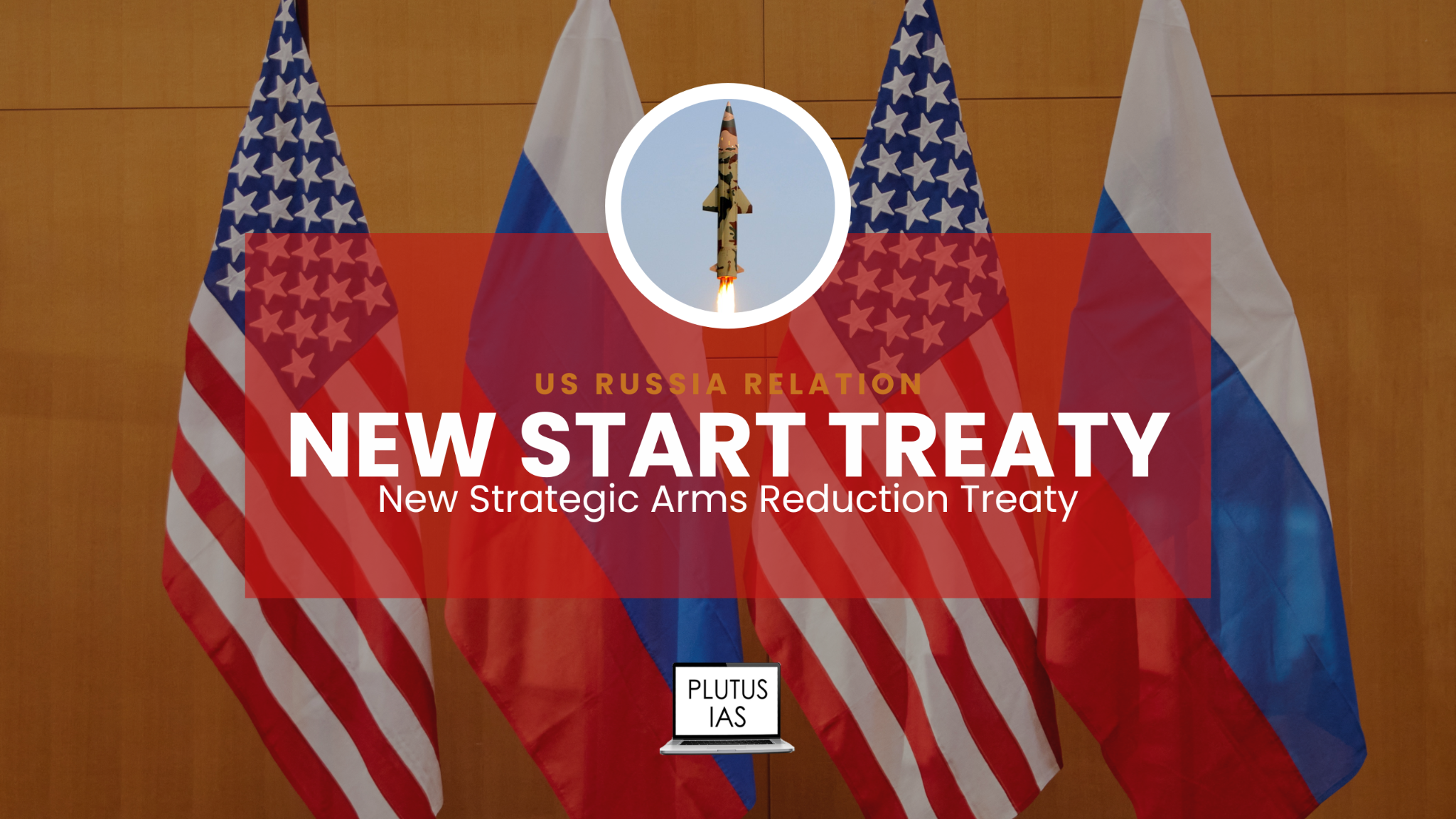
NEW START TREATY
For Prelims:
About New Start Treaty: features Arms Control Regimes
For Mains: GS 2, International Relations
- Implications of the Nuclear Arms race
- India, China, and Pakistan Nuclear Arms race
Why in the news:
Recently Russian President Vladimir Putin announced that Moscow was unilaterally suspending the last remaining nuclear arms control treaty with the U.S., stating that the West was trying to “destroy” Russia. Mr. Putin remarked that Russia will resume nuclear weapon tests in a situation if the US does the same. This announcement raises apprehensions about the removal of the global ban in place on nuclear weapons tests since the Cold War times.
What is the New Start Treaty
It is a nuclear arms reduction treaty between the United States and Russia. The treaty was signed on April 8, 2010, and entered into force on February 5, 2011. The treaty replaced the previous START I treaty, which had expired in December 2009.
Background of New Start Treaty
The background of the New START Treaty goes back to the end of the Cold War when the United States and the Soviet Union began to negotiate arms control agreements to reduce their nuclear arsenals.
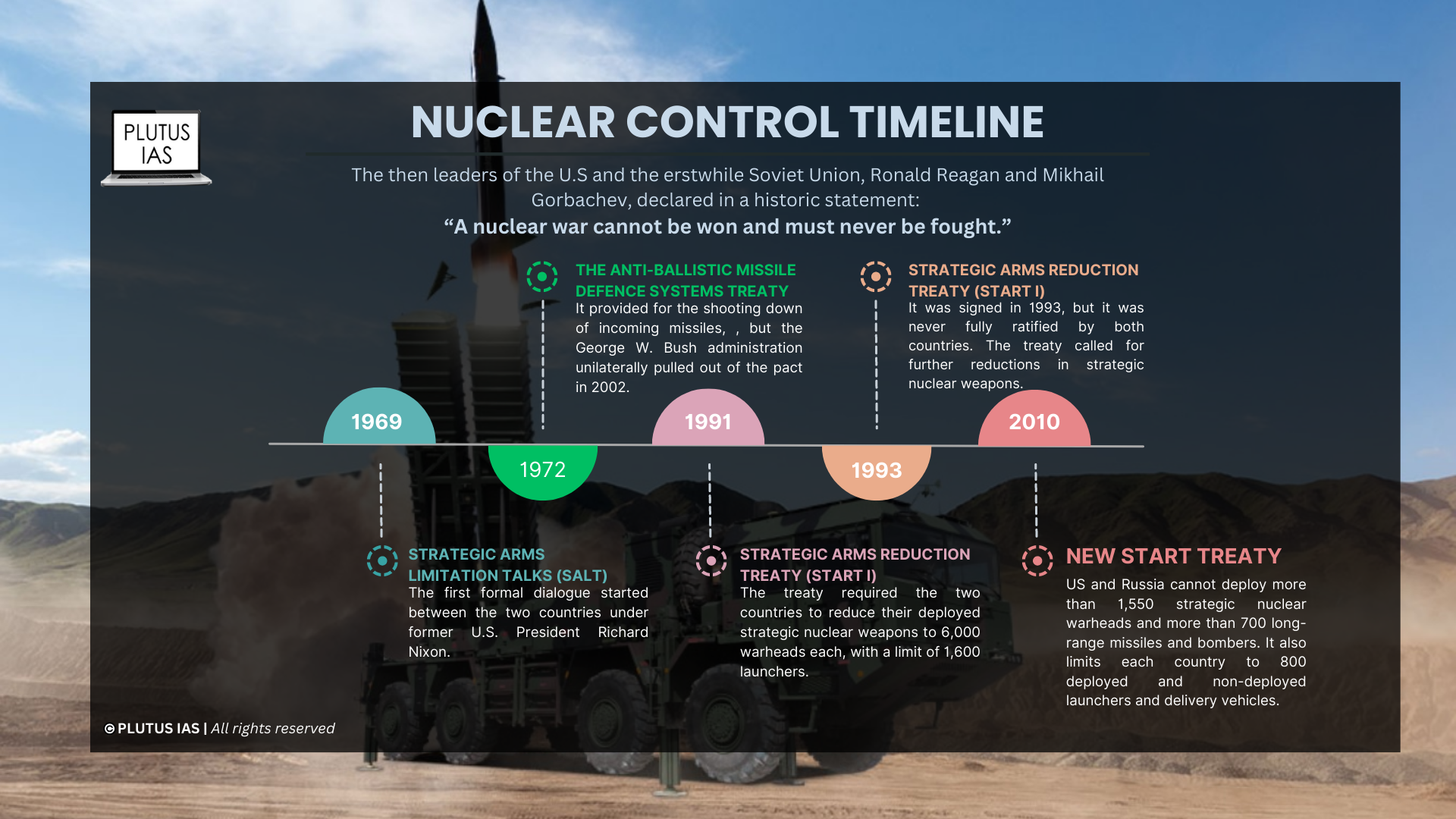
Nuclear Control Timeline
The first Strategic Arms Reduction Treaty (START I) was signed in 1991 and resulted in significant reductions in the number of strategic nuclear weapons deployed by the two countries. However, as the START I treaty was set to expire in 2009, the United States and Russia began negotiations for a new arms control agreement. The negotiations took place against a backdrop of deteriorating relations between the two countries, with tensions over issues such as missile defense and NATO expansion.
Despite these challenges, the negotiations eventually led to the signing of the New START Treaty in April 2010. The treaty was seen as a significant achievement in arms control, as it reduced the number of deployed strategic nuclear warheads for each country by more than 30%.
The treaty also included a comprehensive monitoring and verification regime, which built on the existing verification measures from the START I treaty. This allowed both countries to verify each other’s compliance with the treaty and build confidence in the process.
The New START Treaty was ratified by both the United States Senate and the Russian parliament, and it entered into force in February 2011. The treaty was widely praised for its contribution to international security and for reducing the risk of a nuclear conflict between the two countries. In 2018, both nations achieved the arms limits as agreed in the treaty.
Features of the New START Treaty
The New START Treaty is seen as an important step in reducing the number of nuclear weapons in the world and promoting international peace and security. The features are as below:
- Limits on warheads: The New START Treaty limits the number of deployed strategic nuclear warheads for each country to 1,550, which is down from the previous limit of 2,200.
- Limits on missiles and bombers: It also limits the number of deployed intercontinental ballistic missiles (ICBMs), submarine-launched ballistic missiles (SLBMs), and heavy bombers equipped for nuclear armaments to 700, with an additional 100 in reserve.
- Monitoring and Verification: The treaty also includes a comprehensive monitoring and verification regime, which allows both countries to verify each other’s compliance with the treaty. This includes on-site inspections, data exchanges, and telemetry exchanges.
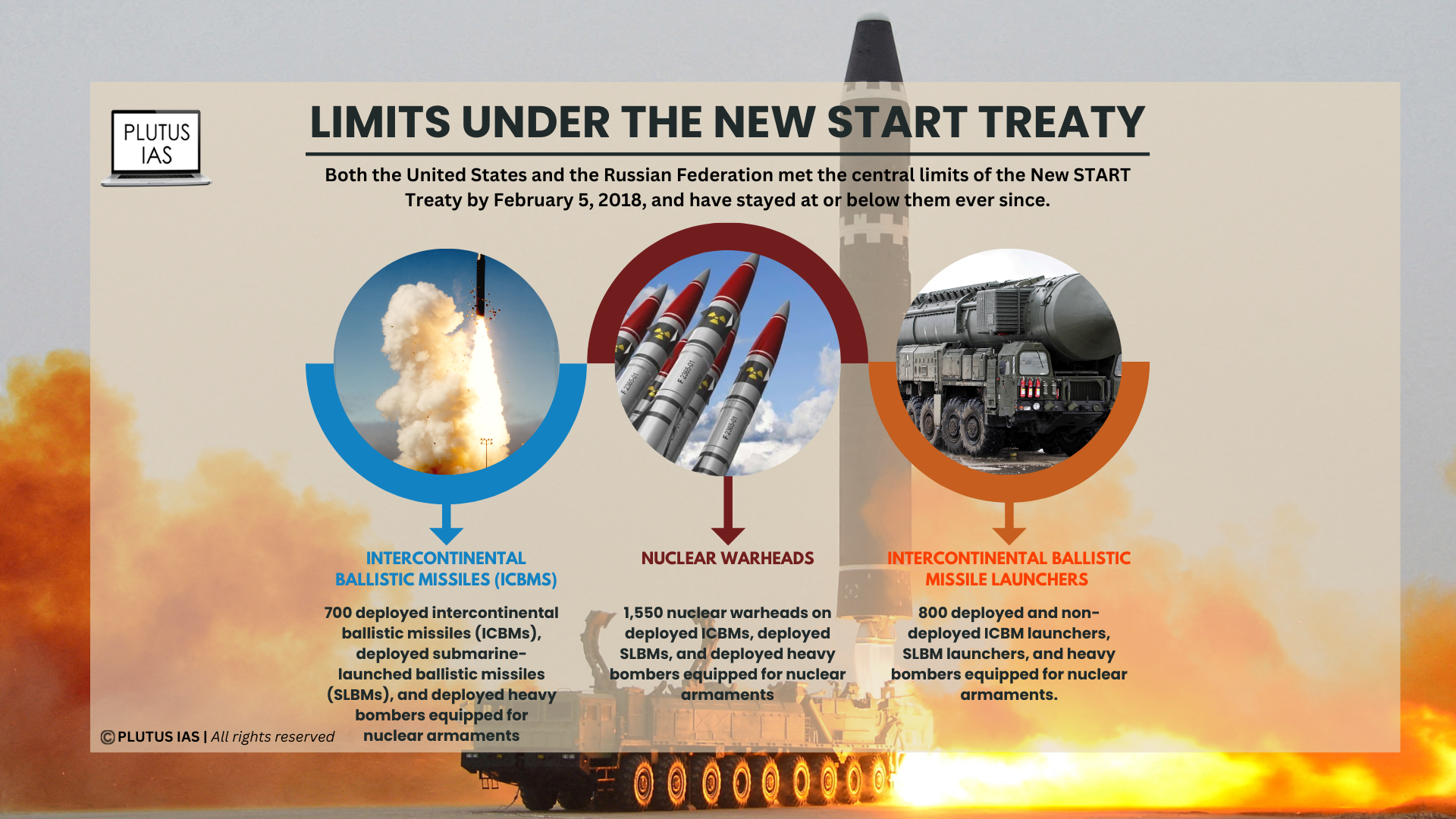
Features of the New START Treaty
Current Status of the treaty
Over the past three years, inspections under the New START Treaty have faced significant challenges. The inspections were initially halted in March 2020 due to the COVID-19 pandemic, and efforts to restart them have since been delayed.
In November 2022, Moscow and Washington were scheduled to discuss the resumption of inspections, but the meeting was postponed by Russian President Vladimir Putin. Since then, there have been no further developments.
On February 23, Russian President Vladimir Putin announced the unilateral suspension of the New START treaty, the last remaining nuclear arms control treaty between the US and Russia. Putin cited NATO’s support for Ukraine, which he claimed was being used to target Russian nuclear facilities and the exclusion of France and Britain’s nuclear arsenals from the treaty as reasons for the suspension. The US accused Russia of not complying with the treaty by not allowing on-site inspections.
What are the implications of Russia suspending the treaty?
According to analysts, Russia’s decision to suspend the treaty is a symbolic move and not an immediate trigger for an arms race. The Russian government has stated that it does not plan to breach the limits on warheads prescribed in the New START treaty and will continue to notify Washington of planned test launches of ICBMs.
Experts believe that the move is intended to put pressure on President Biden and European allies to allow Russia to dictate the terms under which the war in Ukraine would come to an end. This suggests that Russia no longer sees nuclear arms control as a separate issue from its bilateral relations with other countries.
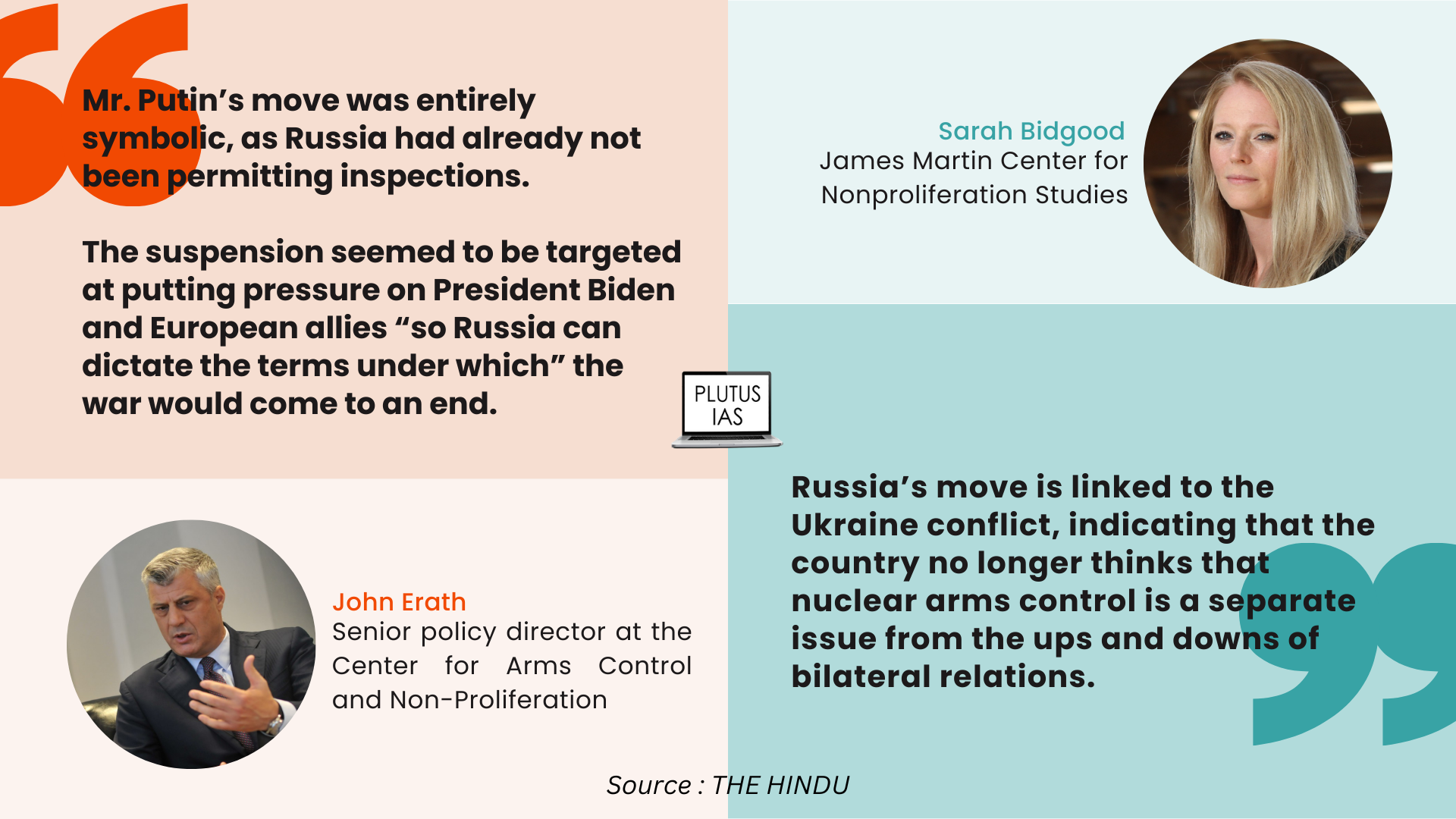
Implications of Russia suspending the treaty
What is the implication of Russia’s suspension of the treaty?
The move has been widely criticized by the international community, with NATO Secretary-General Jens Stoltenberg saying that it has made the world a more dangerous place by dismantling the full arms control architecture.
- Increase in arsenals: Experts believe that the suspension could give other nuclear-armed countries, such as China, Pakistan, Iran, Israel, and India, an opportunity to increase their arsenals.
- US-China arms control cooperation: It could hamper arms control cooperation between the U.S. and China.
Way Forward
The background of the New START Treaty goes back to the end of the Cold War when the United States and the Soviet Union began to negotiate arms control agreements. To address this situation, there are several potential ways forward:
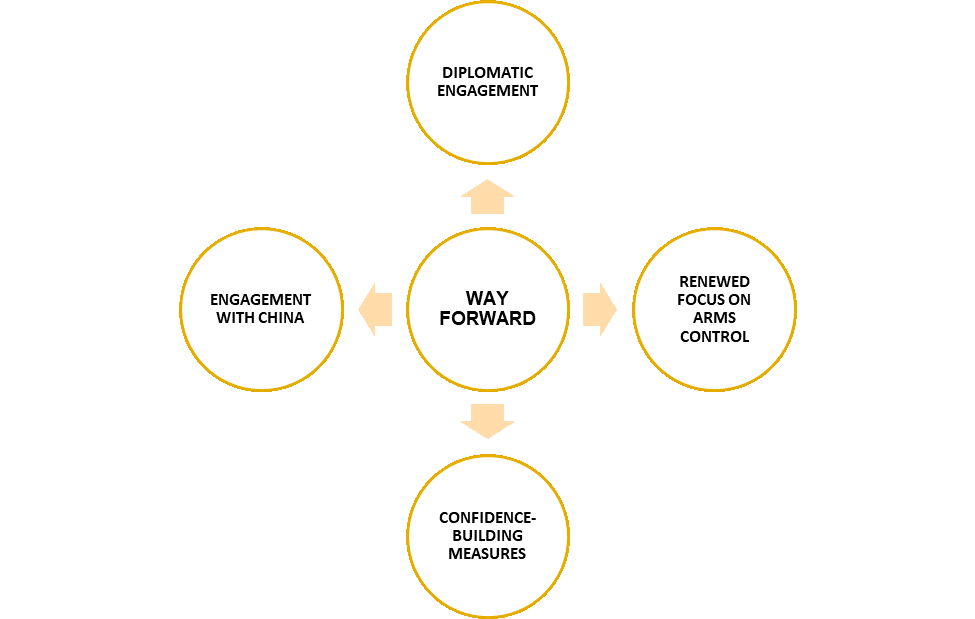
Way Forward of New Start Treaty
- Diplomatic engagement: The United States and its allies could engage in diplomatic efforts to encourage Russia to reverse its decision to suspend the treaty. This could include high-level talks and negotiations to address Russia’s concerns and find a mutually acceptable way forward.
- Renewed focus on arms control: The international community could place a renewed focus on arms control efforts, both globally and regionally. This could involve efforts to establish new arms control agreements or to strengthen existing ones, such as the Comprehensive Nuclear Test Ban Treaty or the Treaty on the Non-Proliferation of Nuclear Weapons.
- Confidence-building measures: The United States and Russia could take steps to build trust and confidence between the two countries. This could involve measures such as increased transparency and communication, joint military exercises, and mutual reductions in nuclear stockpiles.
- Engagement with China: As China’s nuclear capabilities continue to grow, it will be important to engage with Beijing in arms control efforts. This could involve efforts to encourage China to join arms control agreements or to establish new agreements with China.
Overall, the suspension of the New START treaty by Russia is a serious challenge to international arms control efforts. However, through diplomatic engagement, a renewed focus on arms control, confidence-building measures, and engagement with China, there may be opportunities to address this situation and build a more stable and secure world.
Source:
Daily Current Affairs for UPSC
The topic of the current Affair is based on the Internation Relation. The article talks about the new start treaty which is related to the latest war between Russia and Ukraine. Get such kinds of the latest topics on International relations from Plutus IAS current affairs. Also, The aspirant can gain broad knowledge through reading the best daily current affairs for the UPSC examination from our current affairs site. Also, Study weekly and monthly current affairs properly from Plutus IAS for IAS exam preparation.



No Comments